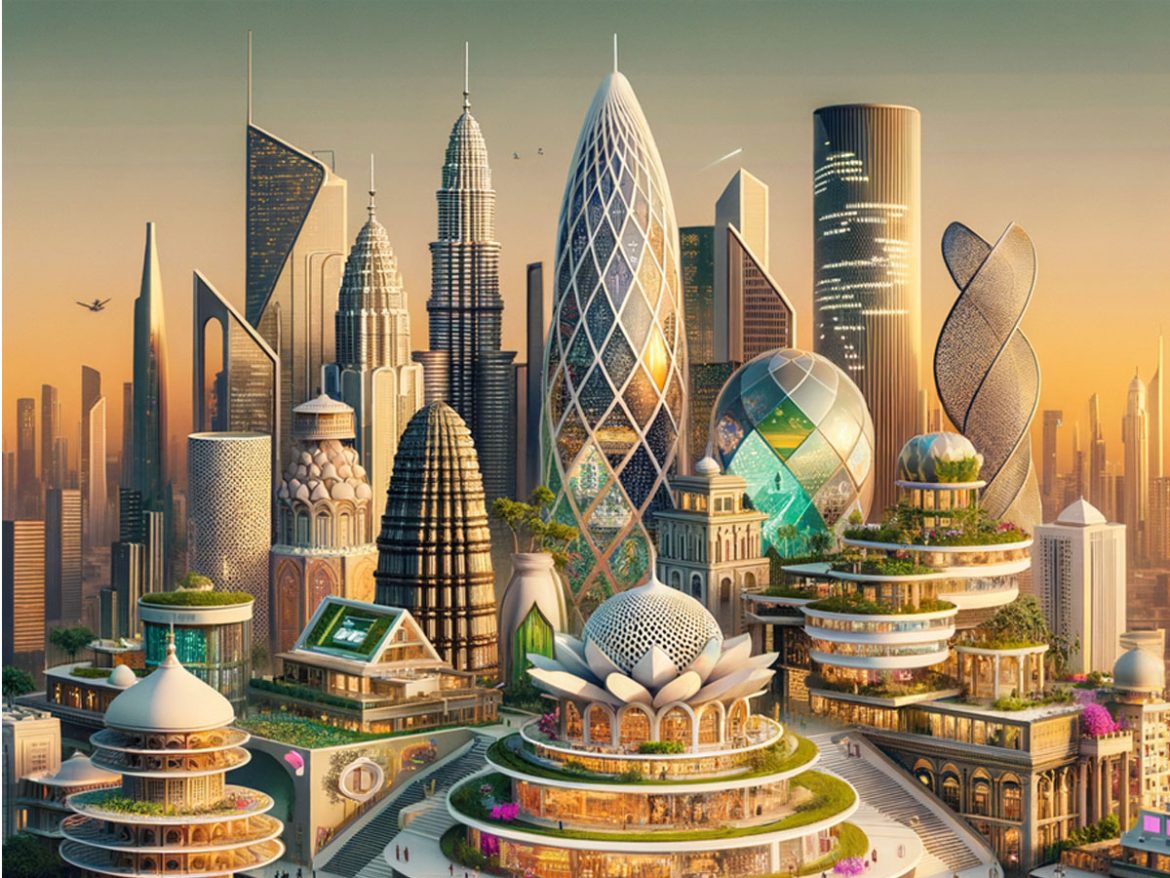Introduction to Indian Architecture in 2025
In “5 Innovative Trends Shaping Indian Architecture in 2025,” we explore the latest architectural movements that are redefining urban landscapes across India.
Indian architecture has always been a reflection of its rich culture and heritage. As we look toward 2025, the landscape is poised to evolve further. Urbanization, climate change, and technological advancements significantly shape the design philosophies of the future. Architects and designers are merging tradition with innovation, creating spaces that are functional yet beautiful.
The focus is shifting towards inclusivity and versatility in design. Buildings will no longer just be structures; they will embody environmental sensitivity and cultural significance.
As the need for sustainable living increases, Indian architecture will increasingly adopt practices that respect both nature and history. This exciting era presents opportunities for architects to redefine the skyline, weaving modern aesthetics with age-old traditions.
Sustainable Design Practices
Sustainable design practices are at the forefront of Indian architecture in 2025. The emphasis on eco-friendly materials and energy-efficient systems is expected to transform the construction landscape. Practices such as passive solar design, rainwater harvesting, and the use of local materials will be commonplace.
Architects will prioritize minimal waste and resource conservation in their designs. Architectural firms will adopt innovative materials that have lower carbon footprints. Green roofs and vertical gardens are set to become staples in urban designs, providing a balance between nature and urban spaces. The vision is to create buildings that not only minimize environmental impact but also enhance the quality of life for inhabitants.
Integration of Smart Technology
The integration of smart technology will revolutionize Indian architecture by 2025. Smart homes equipped with IoT devices will enhance security, convenience, and energy efficiency. Features such as automated lighting, smart thermostats, and security systems will integrate seamlessly into architectural designs.
Additionally, the advent of data-driven architecture will allow architects to create buildings tailored to the needs of their occupants. Buildings will evolve into intelligent ecosystems that adapt in real-time to changing environments.
This shift not only improves user experience but also reduces operational costs. In a fast-paced world, incorporating smart technology will become essential for progressive architects looking to stay ahead in the competitive market.
Biophilic Design Trends
Biophilic design trends are gaining momentum in Indian architecture as we approach 2025. This approach emphasizes a deeper connection between people and nature. Incorporating natural light, outdoor views, and natural materials creates spaces that promote well-being.
Architects are creatively integrating nature into their designs, breaking down barriers between indoor and outdoor environments. Landscaped terraces, living walls, and water features will bring a sense of tranquility to urban living. Research shows that biophilic elements lead to improved productivity and reduced stress among occupants.
As urban areas grow, the focus on biophilic design will become a priority. This trend not only enhances aesthetics but fosters a sustainable relationship with the environment, encouraging a lifestyle that thrives on harmony with nature.
Revival of Traditional Craftsmanship
The resurgence of traditional craftsmanship represents a remarkable trend in Indian architecture. As designers strive to create more sustainable and culturally rich environments, there is a renewed focus on indigenous materials and techniques.
Artisans are being celebrated for their skills in woodwork, stone carving, and textiles, merging ancient methods with modern aesthetics. This revival brings authenticity to projects, preserving unique regional identities.
It creates a sense of belonging while ensuring that craftsmanship is passed down through generations. The incorporation of eco-friendly materials reinforces a commitment to sustainability. Clients now seek a narrative that reflects cultural heritage, making traditional craftsmanship an essential element in contemporary design.
This blend of old and new celebrates India’s architectural legacy, allowing it to flourish in a modern context, enriching both the structure and the surrounding community.
The Influence of Urbanization on Architectural Styles
Urbanization significantly impacts architectural styles in India, leading to a fascinating juxtaposition of tradition and modernity. Rapid urban growth demands innovative solutions to accommodate increasing populations.
This has given rise to high-rise apartments, mixed-use developments, and commercial complexes, effectively utilizing available space. Architects are compelled to rethink design within the urban context, often integrating green spaces and sustainable technologies.
Additionally, today’s urban structures balance function with form, prioritizing aesthetics without compromising practicality. The interplay of local cultural elements with international design trends leads to unique structures that resonate with contemporary lifestyles.
Urbanization fosters a sense of community through innovative public spaces. Thus, as cities evolve, so do architectural styles, encapsulating the dynamic spirit of Indian society, making the built environment a true reflection of its time.
Conclusion: Embracing Innovation in Indian Architecture
The landscape of Indian architecture is evolving at a remarkable pace. As traditional craftsmanship finds its way into contemporary design, urbanization continues to redefine space and style. This dynamic interplay fosters innovation, pushing architects to explore new ideas while retaining cultural roots.
The blend of modern technology with age-old techniques nurtures creativity, culminating in structures that are not only visually stunning but also culturally significant. The future promises exciting possibilities for design enthusiasts and professionals alike.
As we navigate these trends, embracing innovation will be crucial for sustainable growth in the industry. By honoring traditions while anticipating future needs, Indian architecture can continue to inspire, reflecting the ever-changing narrative of society. Through this, we can build not just structures, but legacies.
Dive into our article to learn more about these exciting trends and how they can inspire your next project or home renovation!
Read more Architecture, Interior Design, Real Estate industry news at Middle Height. Follow us on Facebook Instagram and LinkedIn


